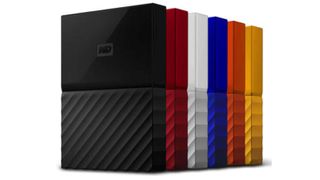Best Raid External Hard Drive For Mac
I feel old saying this, but having used computers since before external hard drives existed, I can say with certainty that buying a hard drive is easier today than it’s ever been before. For traditional drives, prices are low, options are numerous, and capacities are so high that your only choices are “enough space,” “more than enough space,” and “way more than enough space.” I could point you towards a and end this article without another paragraph. Since Apple doesn’t even sell a Mac with that much disk space, you could back up five (or more) computers to that drive without running out of room. Or you could store a decade worth of digital photos alongside a giant media library. But buying an external hard drive isn’t necessarily that simple. There are a bunch of factors worth considering before making a purchase, including everything from reliability to portability, design, capacity, speed, and connectivity.
The 6 best NAS drives for Mac owners. In order to use Time Machine you do need to have an external hard drive connected to your Mac that can store all your old backup files. This stands for. Mac users need to sync an external hard drive with their computer to use Time Machine, Apple's built-in file backup system. Shoppers can find and choose the right Mac hard drive by thinking about storage and portability needs. OWC external hard drives designed and tested for Macs, and compatible with Thunderbolt, eSATA, FireWire, and USB 2.0/3.0. Tf2 best resolution for mac.

Backup Hard Drive External For Mac

Some hard drives are really cheap but have a higher chance of failing after a year or two of heavy use. So in this How-To, I’m going to discuss the big issues you need to consider, and guide you towards the best external hard drive for your needs Quick Overview Most hard drives are guaranteed to work for one to two years no matter what you do with them, ranging from occasional backups to continuous video streaming. They’ll generally last much longer if you don’t use them every day. However — and this is really important — if you keep a typical drive mechanism running 24 hours each day for two years, it’s going to burn out. Hard drive longevity used to be measured with an estimate of “Mean Time Before Failure” (MTBF). Each year has 61,320 hours, so a drive with a MTBF of 300,000 hours would promise to last 4.9 years if actively used 24 hours each day. Desktop drives typically promised higher MTBFs than laptop drives, but there were exceptions.